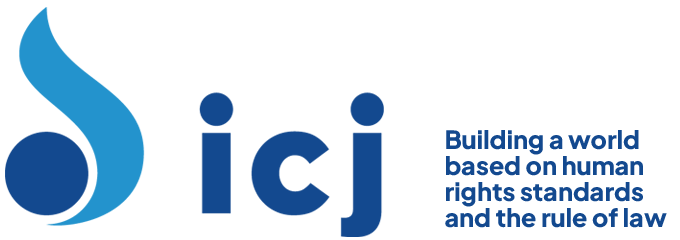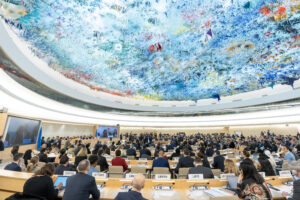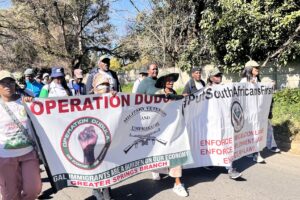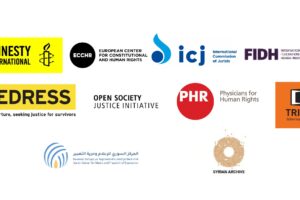Procedural Posture
The Northern Ireland Human Rights Commission (“NIHRC”) challenged Articles 14 and 15 of the Adoption (Northern Ireland) Order 1987, arguing that the eligibility criteria for adoption were unjustifiably discriminatory and in breach of Articles 8 and 14 of the European Convention for the Protection of Human Rights and Fundamental Freedoms. The NIHRC argued that unmarried couples should not be barred from applying to adopt.
Facts
Article 14 imposes a blanket ban on unmarried couples (whether same-sex, opposite-sex or in a civil partnership) being able to apply to adopt as a couple. Article 15 imposes a blanket ban on persons in a registered civil partnership being able to adopt, either as individuals or as a couple. No individual or couple was willing to bring an application. However, the NIHRC presented the affidavit of C., a lesbian who wanted to adopt with her partner and also wished to enter into a civil partnership, which would automatically bar her from adopting.
Issue
Whether the blanket ban on unmarried couples or couples in a civil partnership was compatible with the European Convention.
Domestic Law
Adoption (Northern Ireland) Order 1987, Articles 14 and 15
Re. P, United Kingdom House of Lords 2008 (holding it unlawful for the Family Division of the High Court in Northern Ireland to reject applicants as prospective adoptive parents on the ground that they were not married).
Comparative Law
Du Toit v. Ministers for Welfare and Population Development and Others, Constitutional Court of South Africa, 2003 (finding that excluding partners in same-sex life partnerships from adopting children jointly where they would otherwise be suitable to do so is in conflict with the principle of the best interests of the child).
International Law
European Convention for the Protection of Human Rights and Fundamental Freedoms, Articles 8 (right to private and family life) and 14 (non-discrimination in the enjoyment of rights).
Reasoning of the Court
The NIHRC argued that the law was discriminatory and that there was no justification for the difference in treatment between married and unmarried couples (whether in civil partnerships or not). The respondent argued that the current adoption provisions served the best interests of the child and that there was no right to adopt.
The Court held that although there was no right to adopt, the law had created a legal opportunity in the form of the right to apply to adopt. That right or opportunity fell within the ambit of Article 8 and the state was enjoined by Article 14 to secure the enjoyment of that right without discrimination on any prohibited ground.
The Court cited extensively to Re P, which “demolished” the rational basis for any bright line rule. In that case Lord Hoffman wrote, “A bright line rule cannot be justified on the basis of the needs of administrative convenience or legal certainty, because the law requires the interests of each child to be examined on a case-by-case basis.” Lord Hoffman further wrote, “It is one thing to say that, in general terms, married couples are more likely to be suitable adoptive parents than unmarried ones. It is altogether another to say that one may rationally assume that no unmarried couple can be suitable adoptive parents. Such an irrebuttable presumption defies everyday experience.”
The Court concluded that the difference in treatment between married and unmarried couples could not be justified on any grounds and that unmarried couples were suffering a breach of their Article 8 rights read in conjunction with Article 14 by the continued denial of the legal opportunity to apply to adopt jointly.
As for those in civil partnerships, who were barred by the operation of Article 15, the Court found that the difference in treatment was “even more deleterious.” Not only did they suffer the same discrimination as unmarried opposite-sex couples, they also suffered unjustifiable discriminatory treatment when compared against individual members of an opposite-sex couple who could apply to adopt as an individual. The Court stated, “In choosing to make a public commitment to each other, they become totally excluded both as individuals and as a couple from eligibility to adopt (i.e., not eligible at all). This is quite irrational and plainly unlawful.”
On the applicability of Article 8, the Court observed that it protected “the establishment and development of emotional relationships with others, one’s identity and the manner in which one chooses to present oneself, and one’s sexual identity. One has a right to enjoy all of these freedoms unencumbered. The present legislation essentially entails that a gay or lesbian person must choose between being eligible to adopt, or affirming their relationship in public via a civil partnership ceremony. In pursuance of public expression of their commitment to one another they lose the legal opportunity they had previously enjoyed. Thus Art 8/Art14 are clearly engaged on all of the grounds above.”
Following a remedies hearing the Court declared as follows: “Notwithstanding Articles 14 and 15 of the Adoption (Northern Ireland) Order 1987 it does not prevent couples who are not married, or in a Civil Partnership, from applying to adopt a child pursuant to the terms of that Order. All individuals and couples, regardless of marriage status or sexual orientation, are eligible to be considered as an adoptive parent(s).”
Hannon v. First Direct Logistics, Equality Tribunal of Ireland (29 March 2011), An Application by the Northern Ireland Human Rights Commission for Judicial Review, Queen’s Bench Division, Northern Ireland (18 October 2012) (Full text of judgment, PDF)




